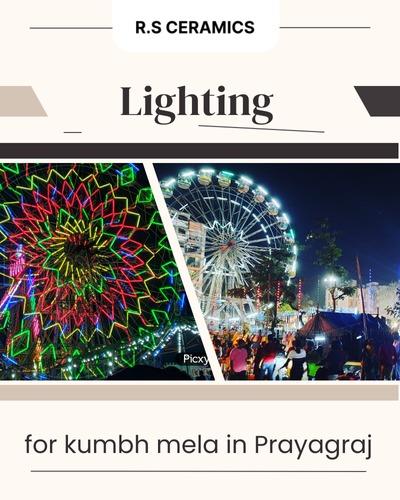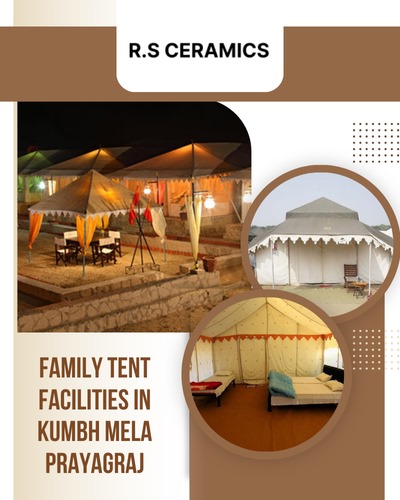Water supply for Kumbh Mela Prayagraj has been perceived and responded to on a gigantic scale considering both the dimensions of the event – size and spiritual value. It is a twelve-year pilgrimage of millions of devotees who gather to bathe in the confluence of the Ganga, Yamuna, and Saraswati rivers to achieve religious cleansing. This is therefore crucial because the large population dictates that the government and the local municipalities involve themselves to make a lot of effort in ensuring good supplies of clean water for drinking, sanitation, and religious uses.
The water tanks scattered all over the grounds of Kumbh Mela are one of the most important parts of such infrastructure. For this reason, the provision of a water supply clean and accessible to the people attending the fairs is related to crowd management at the fairs during the Kumbh season. The following subsection describes all aspects of arrangements for water tanks for Kumbh Mela.
All Kumbh Facilities for water Tank for Kumbh Prayagraj
1. Pre-Event Planning and Setup of Water Tanks:
Engineers and municipal planners, with the help of local administration, study the site together, analyzing population estimates, logistics, etc. The planning includes assigning places for placing the water Tank for Kumbh Prayagraj in the maximum area so that crowding can be reduced to a minimum level, and also, the supply of water should be adequate for millions of pilgrims. The government prepares a budget for their construction, and designs are developed to be very strong, clean, and easy to maintain. Wherever necessary, water tanks are erected: at ghats or steps leading into the rivers in which devotees bathe, points for food distribution, medical attendant camps, and rest places. This would be a site where all the infrastructures would be able to support constant devotion flowing through it day and night.
2. Water Tanks Required
In addition to stainless steel water tanks, Kumbh Mela requires many other sorts of water tanks. Among the most commonly used types are these:
– Stainless Steel Water Tanks: Stainless steel is hard, corrosion-resistant, and has a very minimal chance of contamination. Stainless steel tanks are used most at strategic points where clean and pure drinking water has to be supplied continuously.
Polyethylene tanks: These are both inexpensive and relatively light. They are used extensively in the secondary areas mounted to allow gravity-fed distribution to taps or hand pumps and sanitary ware solutions.
– Mobile water tankers: They control the supply and avert scarcity. The mobile water tankers are imported from neighboring cities and refilled when there’s a demand for them. They are flexible and particularly important where crowd density will vary.
Every type of tank, therefore caters to a specific type of water need and thus ensures that stationary as well as mobile water needs are met with maximum efficiency.
3. Water Purification and Quality Control
The greatest concern: however, is the quality of water in an event like Kumbh Mela, for when waterborne diseases start spreading among thousands congregated at one location, a state of epidemic gets set off, and to counter this evil, the authorities also have stringent purification and quality control measures in place.
– Filtration Systems: Most water tanks are fitted with filtration systems, which filter out any impurities in the water. The simple sediment filters are fitted in most tanks while the better-end models may come with additional UV and RO.
– Chlorination: Some specific tanks have chlorine tablets added to the water that kills bacteria and pathogens. This is normally quite effective in mobile water tanks that cannot attain filtration and distillation.
-Frequent Testing: The quality of water at Kumbh Mela is tested at multiple different places at the ground times a day. Health departments send teams for this purpose. Testing can detect contamination, pH, and other potential microorganisms that might be present in the water. These deficiencies will be warned to experts and the public beforehand, thus clean water will be provided always.
4. Distribution System
The supply, therefore, has to be accessible to every pilgrim. A good distribution system is thus needed. Pipelines, faucets as well as hand pumps have been provided at regular distances on the grounds along the water tanks. For this, temporary water lines also were provided in the form of flexible pipes connecting the tanks through taps at each junction. From these taps, people collect their share of water.
Also, the high-level tanks can offer gravity-fed systems that enable the pressure of water without pumps thus saving energy and easier logistics. Hand pumps are also mounted at places in and around the venue. Thus ease easy access to the pilgrims so that they can fetch water conveniently directly from the tanks.
6. Emergency Response and Backup Systems
Contingency plans are offered due to the massive nature of the water Tank for Kumbh Prayagraj. In this regard, the authorities prepare backup water tanks and mobile units that may be easily erected in case of an emergency such as an unexpected spurt in demand or a breakage in one of the key lines. Mobile water tankers are fast-response solutions in filling short-term shortages or providing water if any of the key tanks need maintenance.
Water facilities were strategically erected at the tents of the medical area and main gathering points to ensure. That there would not be a disruption in the water supply, even if the event needed it. All the backup systems made sure that there would be no stumbling blocks for the continuation of the event, and no visitor was made to go without water during the visitation.
7. Environmental and Sustainability Measures
Current Issues: Now instead of investing in the use and burying of materials in the ground, authorities are awaiting. Their re-utilization or recycling in short-term tanks so that the impact of infrastructure facilities. Regarding water Tank for Kumbh Prayagraj could be reduced and the use of plastics could be curbed. The water conservation campaign is also promoted by encouraging pilgrims to use it instead of wasting it.
In addition, the water constructed during the festival may be reused or recovered afterward by transferring. The ones to nearby villages or for further storage and usage during subsequent festivals. In this regard, the waste that contributes to less supply of water in the nearby local communities is reduced. Therefore, the event becomes more sustainable.
Conclusion
The water tanks for Kumbh Mela in Prayagraj prove India can manage such a massive population concentration. In one place by careful planning and technology, apart from the involvement of the community in it.
Millions find an essential source in these water tanks-the source of health, safety, and comfort to all the attendees. Logistically, the coordination of such water tanks, in addition to purification and distribution as well as maintenance. Shows the significant role that clean and safe supplies of water play in one of the world’s biggest. It’s a brilliant mix of heritage and technology while pursuing sustainability and takes on a specific kind. Evolving character that water management in large-scale events takes.


